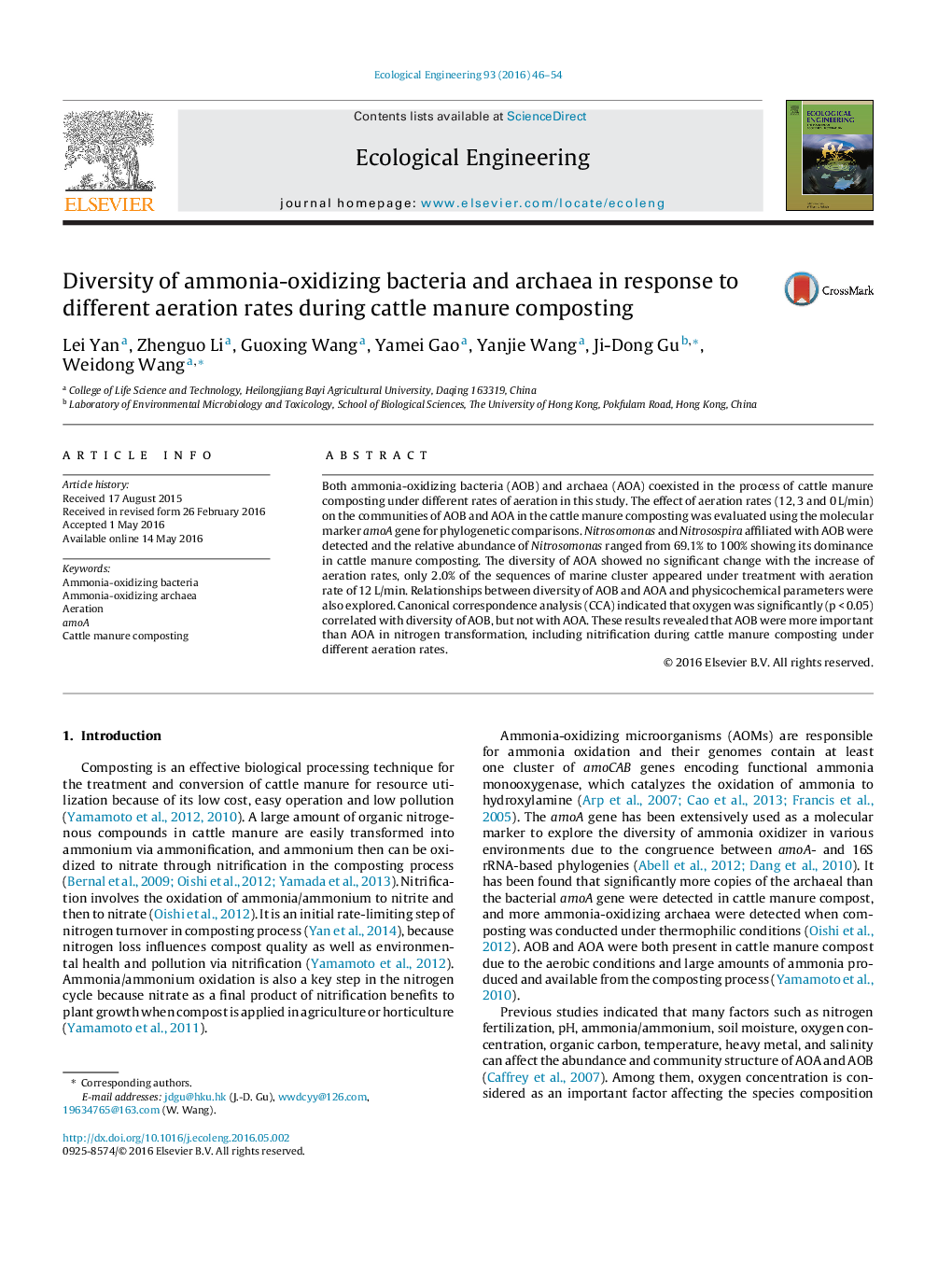| Article ID | Journal | Published Year | Pages | File Type |
|---|---|---|---|---|
| 4388711 | Ecological Engineering | 2016 | 9 Pages |
•A direct link between aeration rate and diversity of AOA and AOB was estimated.•Bacterial amoA libraries were dominated by Nitrosomonas-related sequence types.•The diversity of AOA was lower than AOB and increased with aeration rate increase.•Oxygen was significantly (p < 0.05) correlated with AOB diversity but not with AOA.•AOB were more important than AOA in nitrification in cattle manure aerated composting.
Both ammonia-oxidizing bacteria (AOB) and archaea (AOA) coexisted in the process of cattle manure composting under different rates of aeration in this study. The effect of aeration rates (12, 3 and 0 L/min) on the communities of AOB and AOA in the cattle manure composting was evaluated using the molecular marker amoA gene for phylogenetic comparisons. Nitrosomonas and Nitrosospira affiliated with AOB were detected and the relative abundance of Nitrosomonas ranged from 69.1% to 100% showing its dominance in cattle manure composting. The diversity of AOA showed no significant change with the increase of aeration rates, only 2.0% of the sequences of marine cluster appeared under treatment with aeration rate of 12 L/min. Relationships between diversity of AOB and AOA and physicochemical parameters were also explored. Canonical correspondence analysis (CCA) indicated that oxygen was significantly (p < 0.05) correlated with diversity of AOB, but not with AOA. These results revealed that AOB were more important than AOA in nitrogen transformation, including nitrification during cattle manure composting under different aeration rates.
